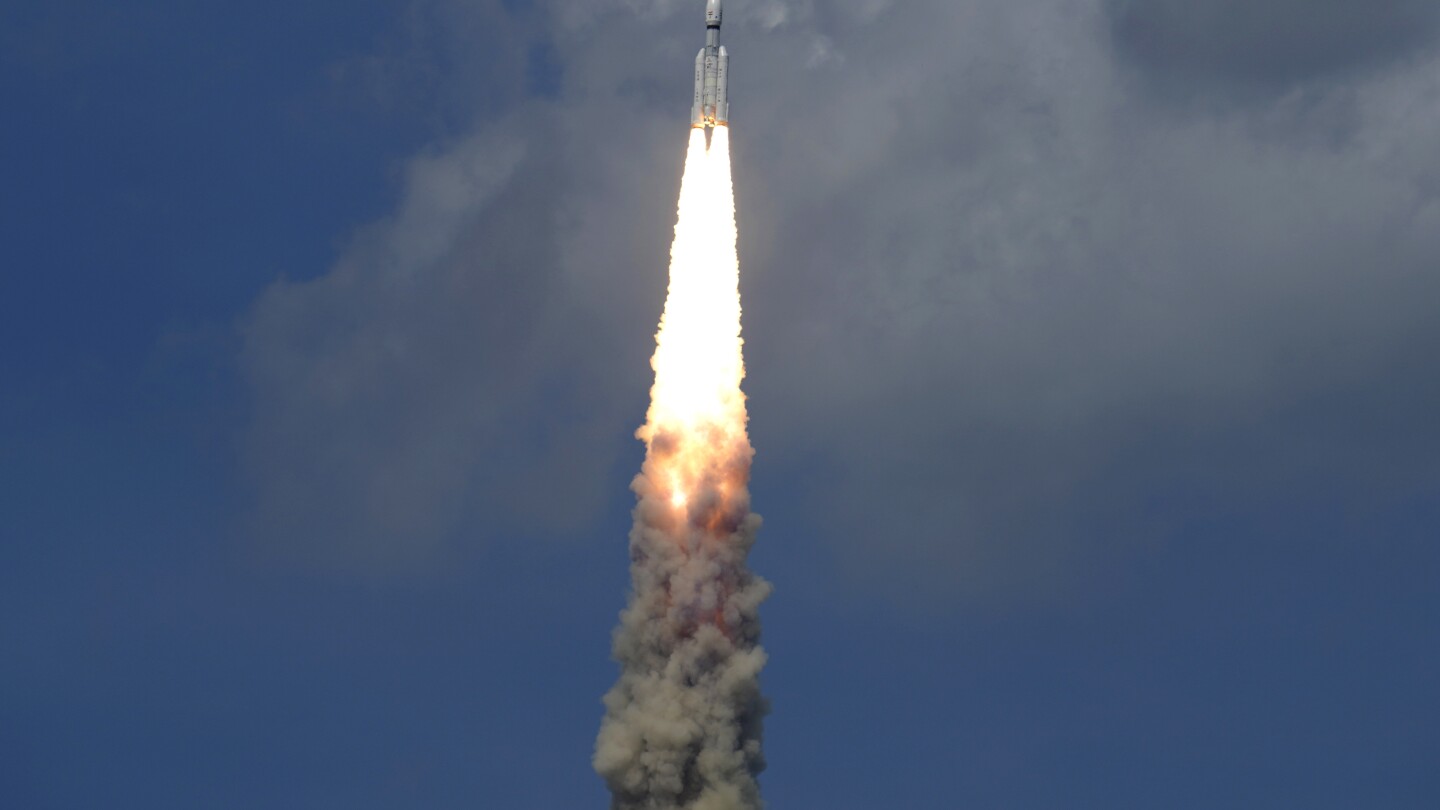'SRIHARIKOTA, India (AP) — An Indian spacecraft blazed its way toward the far side of the moon Friday in a follow-up mission to its failed effort nearly four years ago to land a rover on the lunar surface, the country’s space agency said.
Chandrayaan-3, the word for “moon craft” in Sanskrit, took off from a launchpad in Sriharikota in southern India with an orbiter, a lander and a rover, in a demonstration of India’s emerging space technology. The spacecraft embarked on a journey that is expected to last slightly over a month before landing on the moon’s surface later in August.
Applause and cheers swept through mission control at Satish Dhawan Space Center, where the Indian Space Research Organization’s engineers and scientists celebrated as they monitored the launch of the spacecraft. Thousands of Indians cheered outside the mission control center and waved the national flag as they watched the spacecraft rise into the sky.
“Congratulations India. Chandrayaan-3 has started its journey towards the moon,” ISRO Director Sreedhara Panicker Somanath said shortly after the launch.
A successful landing would make India the fourth country — after the United States, the former Soviet Union, and China — to achieve the feat.
The six-wheeled lander and rover module of Chandrayaan-3 is configured with payloads that would provide data to the scientific community on the properties of lunar soil and rocks, including chemical and elemental compositions, said Dr. Jitendra Singh, junior minister for Science and Technology.
India’s previous attempt to land a robotic spacecraft near the moon’s little-explored south pole ended in failure in 2019. It entered the lunar orbit but lost touch with its lander that crashed while making its final descent to deploy a rover to search for signs of water. According to a failure analysis report submitted to the ISRO, the crash was caused by a software glitch.
The $140-million mission in 2019 was intended to study permanently shadowed moon craters that are thought to contain water deposits and were confirmed by India’s Chandrayaan-1 mission in 2008.
Somanath said the main objective of the mission this time was a safe and soft landing on the moon. He said the Indian space agency has perfected the art of reaching up to the moon, “but it is the landing that the agency is working on.” ’
I wish them the best of luck. I don’t believe only a few select superpowers should have proprietary domination of space travel. The more countries develop the capability, the better off humanity will be. In my subjective opinion, anyway.



It’s a considerable technological feat, and far more complex than simply firing satellites into orbit. Only a few other countries have accomplished it so far.